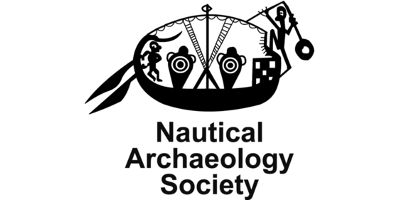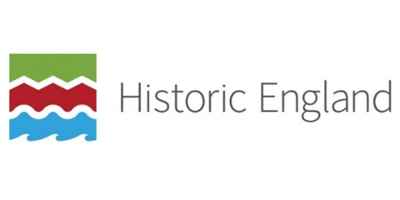RNLI Heroism: The wreck of the Mexico
09/12/2021 | Andy Sherman
The 9th December is one of the bleakest days in the history of the Royal National Lifeboat Institute (RNLI). On this stormy winter’s afternoon in 1886 the German barque1, Mexico sailed out of the River Mersey heading towards Ecuador; tragically she never travelled very far that night. A few hours later the Mexico would be in terrible trouble.
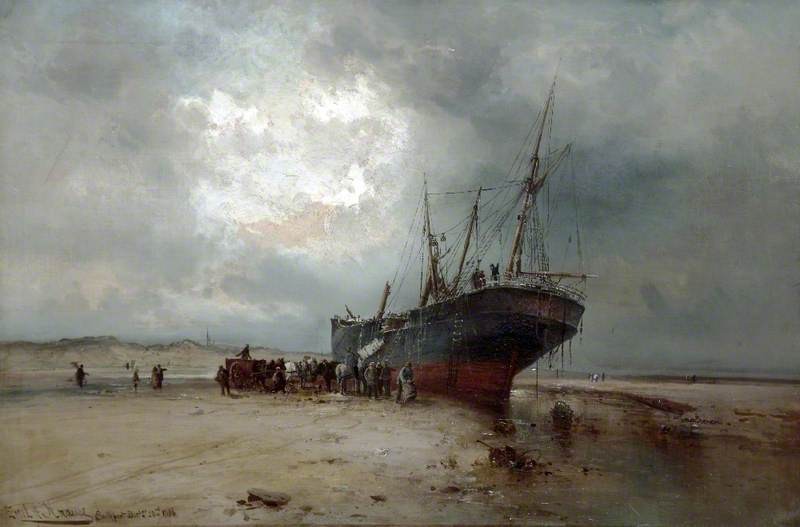
By about 21:00 the Mexico had been blown into the Ribble Estuary and breakers could be heard crashing over sand bars all around her. The Captain of the Mexico ordered distress flares to be launched and hoped for rescue. At Southport the flares were seen, and a lifeboat crew quickly assembled. The Coxswain, Charles Hodge decided the conditions were so rough he required three extra crewmen. Given the direction of the wind it was necessary to haul the Eliza Fernley along the beach so she could be launched windward of wreck. By about 23:00 the boat was in position and the heroic crew launched into the storm. It took almost two hours for the lifeboat to reach the Mexico but by about 01:00 the Eliza Fernley was in position to attempt a rescue. In attempting to turn side on to the Mexico the lifeboat was overturned by the waves and most of the gallant crew disappeared from view.
The distress signals from the Mexico had also been seen by the watchkeeper at St Annes lighthouse, who fired the lifeboat gun to summon another brave crew to the rescue. Given the dispersed nature of the crew of the St Annes lifeboat it took a while for them to assemble, but by around 22:30 the Laura Janet also launched into the teeth of the storm. Nobody really knows what happened that night, but that was the last the brave crew of the Laura Janet would be seen alive.
Unknown to the crews of the Eliza Fernley and the Laura Janet the distress signals were also spotted in Lytham. When the coxswain of the Lytham lifeboat, Thomas Clarkson, was summoned he too decided to launch; even though the Mexico was more than seven miles away from his position. This would the first time the Charles Biggs had ever been launched on rescue, being just ten days old. But a third fearless team was quickly assembled and launched the new lifeboat shortly after 22:00.
Being a newer lifeboat, the Charles Biggs was fitted with four water ballast tanks to help her sail better in stormy weather. This new addition would help save the crew on this perilous night. After several hours of rowing and sailing the Charles Biggs and her crew had almost reached the Mexico, when the crashing waves and swirling winds threw the lifeboat on to her port beam, breaking three oars. Happily, for the gallant crew and the men of the Mexico the Charles Biggs righted herself and was able to come along side. By 01:00 all the crew of the Mexico had been rescued and full of water, battered by the storm the Charles Biggs was able to fight back to Lytham.
The three crews didn't realise that they had all responded to the same vessel in distress and it was some time before anybody knew the Eliza Fernley and Laura Janet was missing. However, by 10:30 the terrible news was known, and the Charles Biggs would heroically launch again to search for their fellow lifeboatmen. The upturned hull of the Eliza Fernley was discovered washed onto the beach on the morning of the 10th. Amazingly two of her crew were found exhausted, next to vessel having managed to hold onto the upturned boat as it was flung ashore.
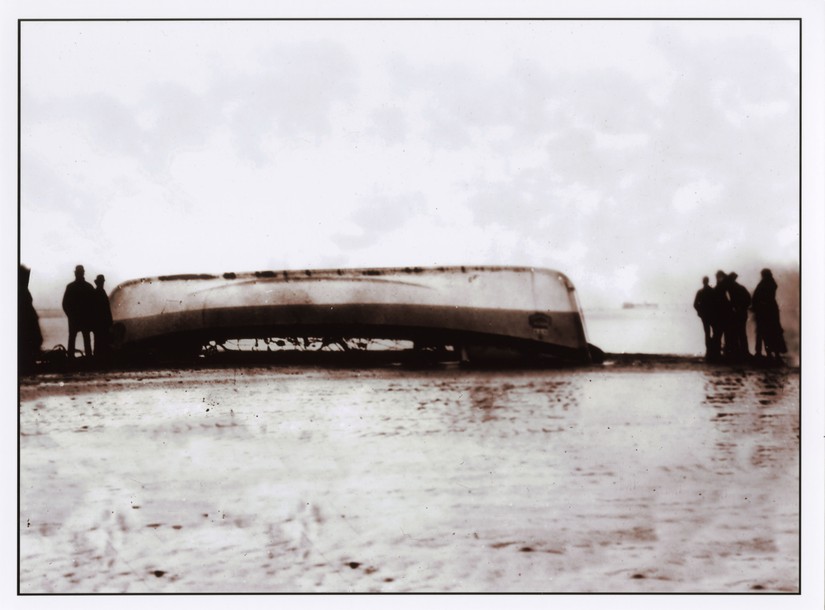
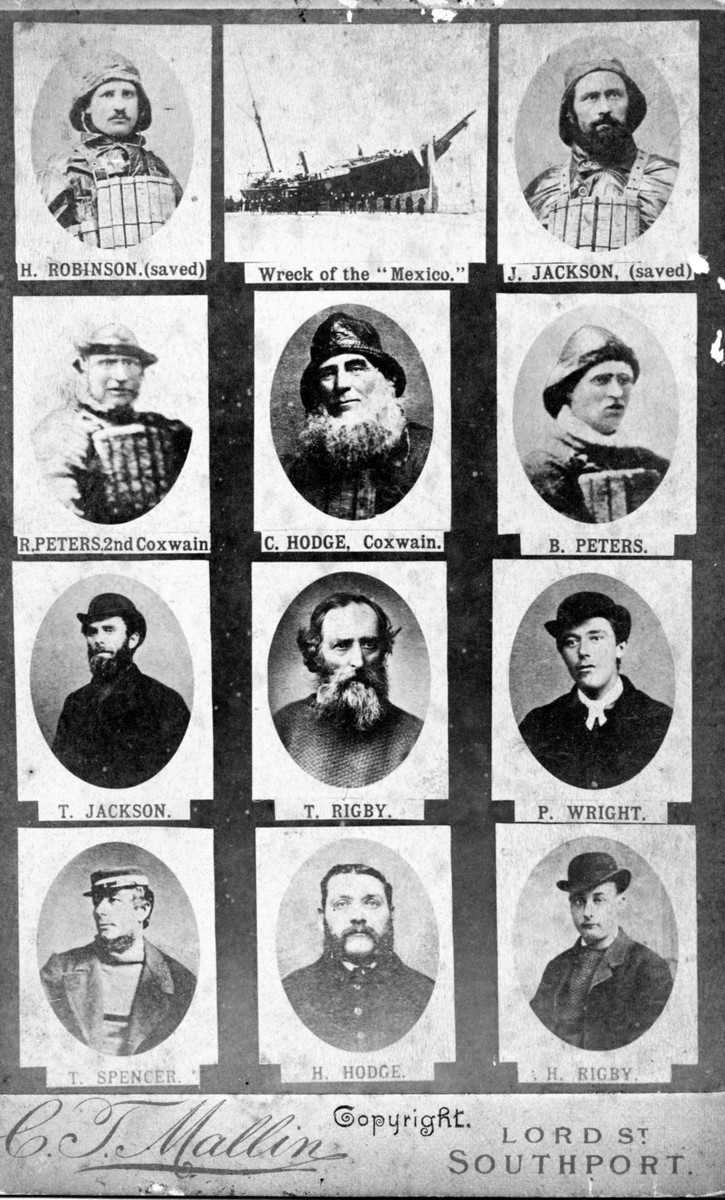
Sadly, the crew of the Charles Biggs found the capsized Laura Janet partially afloat, all her crew missing, shortly after starting their search. The remains of the brave crewmen from the Eliza Fernley and the Laura Janet washed to shore over the next few days and were laid to rest around Liverpool Bay.
In total 27 lifeboatmen tragically lost their lives, 14 from Southport and 13 from St Annes, leaving behind 16 widows and 50 orphans. The disaster remains the greatest loss of life suffered by the RNLI in a single rescue attempt to this day.2, 3
The loss of life was seen as a national tragedy, with Queen Victoria noting in her diary "A dreadful misfortune has happened on the Lancashire coast, the loss of life boats & many lives, a terrible and inconceivable thing!" In the following days a welfare appeal was launched for the families of the crew that lost their lives, which resulted in the RNLI's first flag day. The appeal was generously supported by people around the world including Queen Victoria and Kaiser Wilhelm.
Memorials to the bravery and dedication shown by the crews on that tragic night were erected in Southport Cemetery and on the shorefront at St Annes.
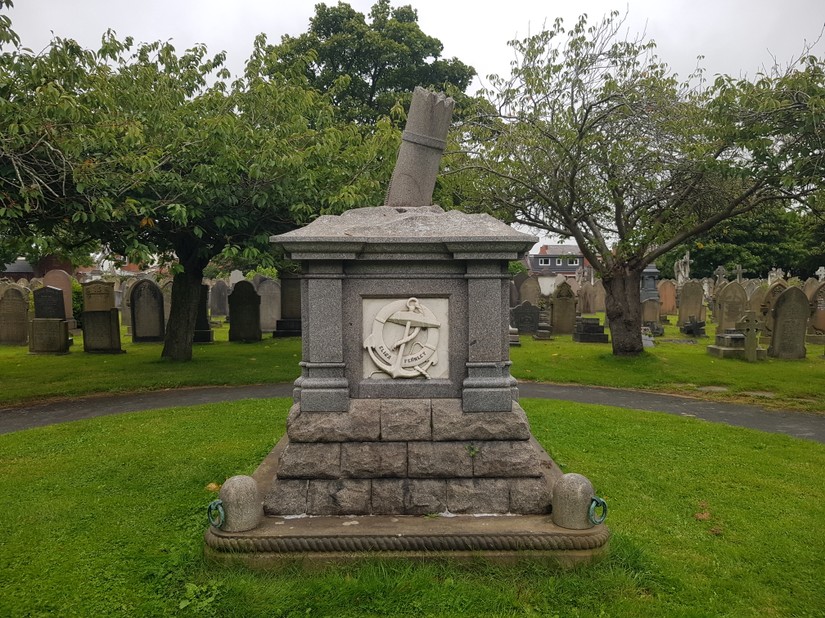
The Mexico herself was re-floated, repaired and sold off, only to be wrecked and finally lost off the east coast of Scotland in 1900.4
This post is dedicated to all the brave men and women of the RNLI who have risked their lives to save those in peril at sea. Thank you for your heroism.
1 A type of sailing ship usually built with three masts. The foremast and the mainmast being square-rigged, and the mizzenmast being rigged fore and aft.
2 The Worcestershire Chronicle, 11th December 1896, p5
3 Kilroy F, 1986, 1886: The wreck of the Mexico, The Lifeboat, Volume 49, Issue 495
4 Sefton Council,2017, Shipwrecks of the Sefton coast: A guide to the shipwrecks of the Sefton coastline





